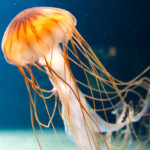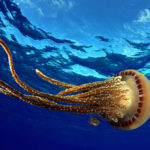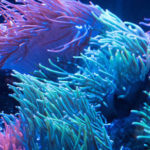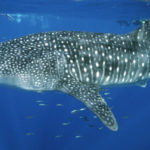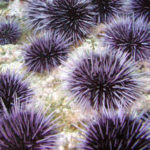Facts about jellyfish
 Jellyfish are ubiquitous in the seas and oceans. Some of them are beautiful, some look frightening, besides, among them there are absolutely harmless creatures, and deadly ones. We have collected for you a selection of interesting facts about jellyfish.
Jellyfish are ubiquitous in the seas and oceans. Some of them are beautiful, some look frightening, besides, among them there are absolutely harmless creatures, and deadly ones. We have collected for you a selection of interesting facts about jellyfish.
- The body of the jellyfish is about 98% water.
- Some species of jellyfish reproduce by division.
- The name of the jellyfish is due to the legend of Medusa Gorgon.
- Despite its seeming fragility, jellyfish live at a depth of up to ten kilometers below the surface of the water.
- Some aquarists in Japan keep jellyfish in their aquariums, since in this country it is believed that watching the smooth and monotonous movements of jellyfish helps calm the nervous system.
- Kubomeduza, or sea wasp, swims at a speed of about two meters per second, and the poison contained in the body of an average individual can kill more than fifty people in a few minutes. The touch of this jellyfish is deadly dangerous.
- The largest jellyfish in the world is the Arctic giant jellyfish. Dimensions of the dome of the largest discovered specimen were more than 2.28 meters, and the length of the tentacles – more than 36 meters.
- In the Medusa lake on the Rocky archipelago, that in a quiet ocean, there are about two million of these creatures, despite the fact that the lake is only about 160 by 460 meters in size.
- Jellyfish are found in all oceans without exception.
- Some kinds of jellyfish in Asian countries are used for food.
- Currently, about three thousand species of jellyfish are known, but they regularly open new species.
- Scientists believe that jellyfish appeared on Earth much earlier than dinosaurs.
- Almost all kinds of jellyfish begin their life cycle like polyps, and only then go to the second stage, turning, actually, into jellyfish.
- Jellyfish do not have lungs – they breathe the entire surface of the body.
- The jellyfish has 24 eyes.
- Jellyfish do not have a brain, but they have two nervous systems.
- Jellyfish are capable of self-moving, sucking in water and then throwing it back, but most of the time they just drift after the current.
- Tentacles of poisonous jellyfish remain dangerous for a long time even after the jellyfish is dead.
- Some species of jellyfish can produce up to 45 thousand larvae-planulas per day.
- Jellyfish since the Middle Ages are used in medicine.
